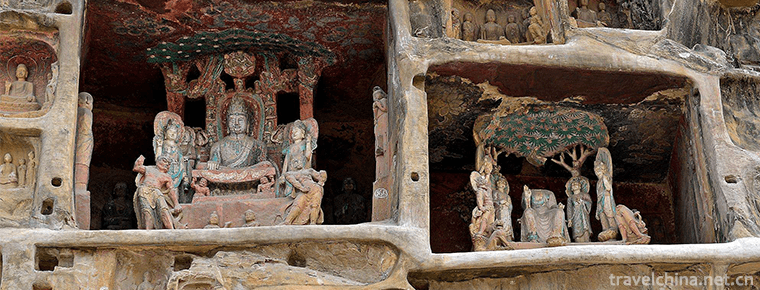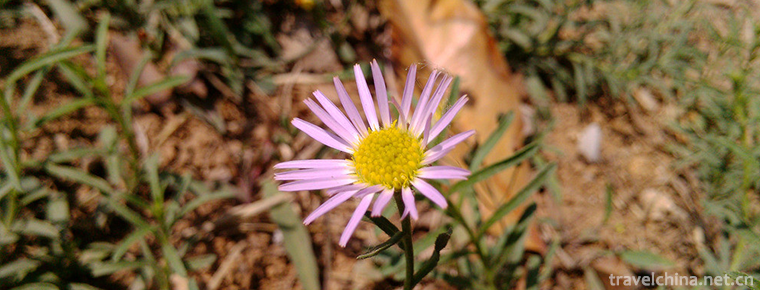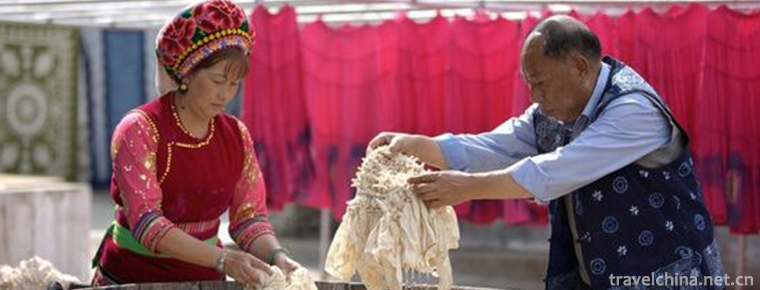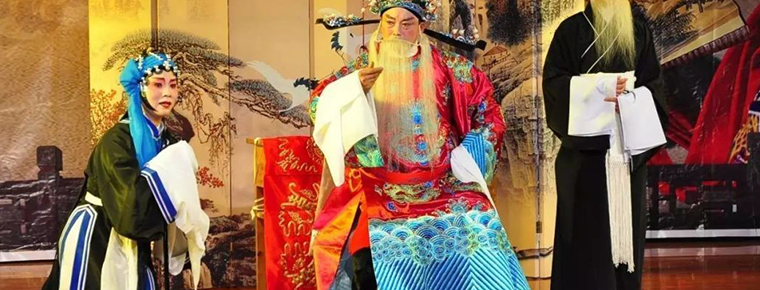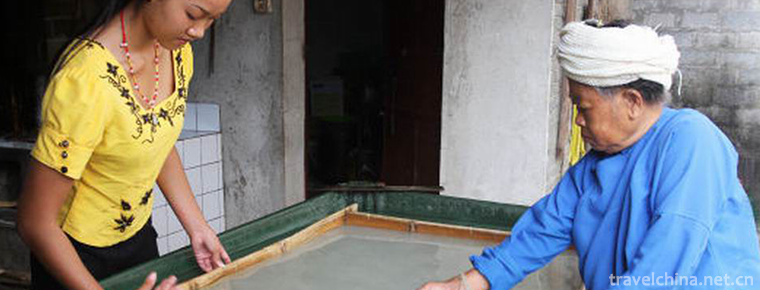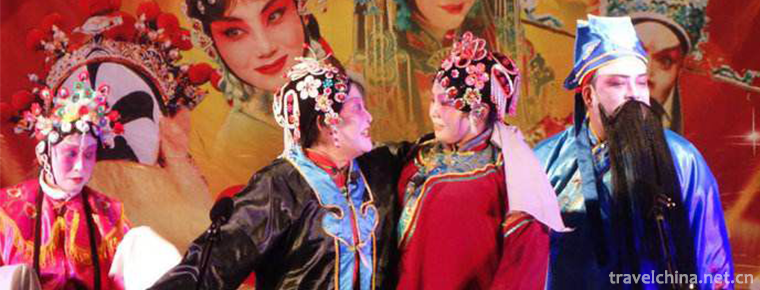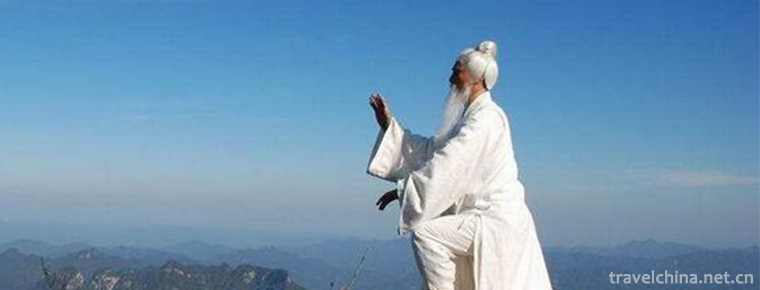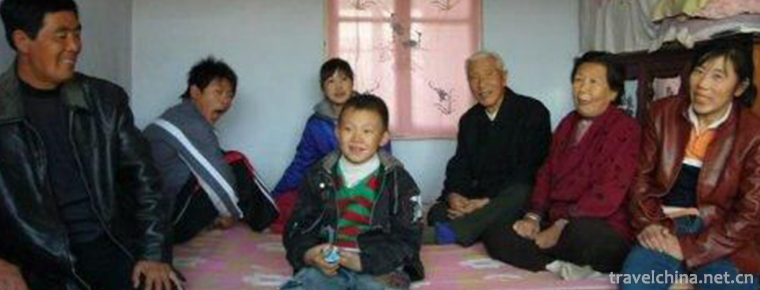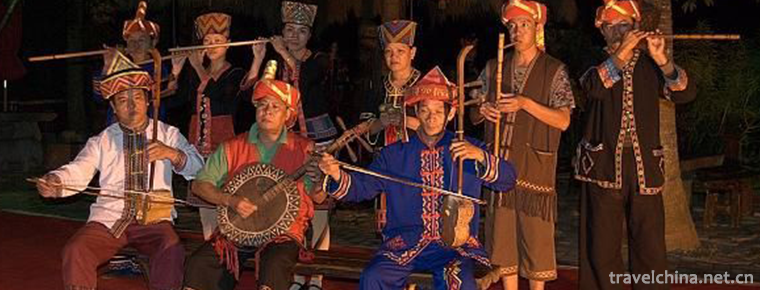Violin Opera
Violin Opera
Violin Opera, formerly known as Huagu Opera, is a local traditional drama in Chongyang County, Hubei Province, one of the national intangible cultural heritage.
Violin opera, originally a flower-drum opera in Yueyang, Hunan Province, spread to Chongyang, Tongcheng and other places around the end of the Qing Dynasty and renamed "Violin Opera", is a unique local opera type in Chongyang County, Hubei Province. It has gradually developed and formed on the basis of the combination of Liangshan Opera, local minor tunes and folk music in southeastern Hubei, Northern Hunan and Northern Jiangxi. It is named for its main musical instrument. 。 Violin opera is loved by local people because of its beautiful tune, lively melody and appropriate performance content.
On June 7, 2008, violin opera was approved by the State Council of the People's Republic of China to be included in the second batch of national intangible cultural heritage list, with the heritage number IV-126.
historical origin
Violin opera has been handed down from the predecessor of the popular "small silk string" in Yueyang and Linxiang of Hunan Province in the mid-Qing Dynasty. Yueyang area used to call Baling Han opera "big silk string". According to Xu Guonan and Meng Fuchang, veteran violin performers in southern Hubei, in the mid-Qing Dynasty (about 1885-1889), Jiang Chuanyu and Peng Ruisheng, Hunan "Little Silk String" performers, led classes to perform in Tongcheng and Chongyang, and Peng settled in Chongyang to teach apprentices, where violin troupes began.
At the end of the Qing Dynasty, there were local violin performers such as Chongyang people's castrate chicken and Tongcheng people's Li Zhaoshi. According to the investigation, Li Guangxu, the earliest native violin troupe owner in Tongcheng, was born in Tongzhi period of Qing Dynasty. It can be seen that the popularity of violin opera began in Tongcheng at the latest in the late Qing Dynasty.
After the founding of the People's Republic of China, violin opera has developed in southeastern Hubei. In 1956, veteran artist Xu Guonan and others participated in the first opera convention of Hubei Province with the traditional opera "Vegetable Garden Fair" and won high praise.
In 1963, on the basis of excavation and collation organized by cultural museums in Chongyang and Tongcheng counties, Xie Gongcheng, Tong Zhongliang and Chen Guoquan, the collecting, recording and collating of the Violin Opera Music (mimeograph) were compiled and printed by the collecting group of collecting styles of Hubei Art College, such as Xie Gongcheng, Tong Zhongliang and Chen Guoquan.
During the Cultural Revolution in the 1960s, the performance of violin opera almost disappeared.
In 1980, Chongyang and Tongcheng Cultural Museum set up a semi-professional violin theatre troupe one after another. Through the performances of ancient costume operas Shuanghe Lian, Golden Case, modern operas such as Naoguapeng, Shanxiang Girl and Duck Commander, the traditional aria of violin opera was innovated.
In the mid-1980s, semi-professional troupes and amateur troupes were still active in southern Hubei urban and rural areas.
Cultural characteristics
Tune
Violin opera tunes include right tune, sad tune, dream tune, West Lake tune, Yin tune, one-character tune, anti-cross tune and various flower tune minors. The tune is beautiful and the melody is bright.
Character and profession
The main roles of violin opera include Laosheng, Xiaosheng, Dairy, Zhengdan, Huadan, Boudoir Dan, Grandpa Dan and Joker. They are called "three generations, four generations with one clown". Among them, the clown acts both as a shaker and a pure character, and the folk has the theory of "seven tights and eight loosenings". There are fewer martial arts plays, so there is no professional martial arts profession.
Musical Instruments
The main instrument of the violin opera is the tubular huqin, commonly known as the "violin", which is played with 2-6 strings. The tone is rich, mutually expanding and slightly sandy. Accompaniment melody is neither a complete repetition of the tune of the aria nor a simple "add flowers", but the first example has a certain degree of independence. Accompanied instruments include erhu, yueqin, flute, suona, etc. Percussion music has drums, boards, gongs, cymbals and so on. It is used not only to coordinate the actors'body movements and to render the stage atmosphere, but also to connect various singing tunes, turn boards, start singing and brake tunes.
Banqiang music
The Banqiang music of violin opera is divided into two parts: the main tune and the minor tune. The main tune includes the tunes of "right tune", "one-character tune", "Yin tune", "tuo zi", "West Lake tune" and "counter-tune", which are composed of the top and bottom two phrases. The Orchestra of violin opera is different from that of civil and martial arts. It originally consists of "master", "clapper", "drummer" and "gong". The "master" plays the main accompaniment task, playing the first piano and playing the sonar; the "clapper" assists the accompaniment, playing the Second Piano and playing the gong; the "clapper" clapper, playing all percussion instruments except the gong; and the "gong" is played by apprentices. Responsible for playing gongs and checking yard.
Representational repertoire
As of May 2015, there are more than 120 traditional violin operas, more family operas, more singing operas and fewer martial arts operas. Most of them are based on folk life and myths and legends, such as "Seven Sisters go down to earth", "Mother and daughter beg for food", "Mother's tears", "Three sons fight for father", "Spring Peach", "Shuanghe Lian", "Zhang Guang Shangshou", "Selling Maolang", "Two Sisters go down to earth", "Zhu Buying Cheng sells firewood", "Jinchai Injustice", "Han Xiangzi" and so on.
Distribution area
Violin opera is popular in some areas of Chongyang, Tongcheng and Puqi, Xianning and Tongshan counties in southeastern Hubei Province, as well as in parts of Hunan and Jiangxi provinces adjacent to them.
Inheritance and Protection
Inheritance value
Violin opera is a unique flower in Chinese opera garden, which has the research value of local opera history, folk music and so on.
Violin Opera, a wonderful folk art, is rooted in the fertile soil of the southern mountainous area of Hubei Province, and has become more and more brilliant and dazzling. Amateur Violin Opera Troupe, an important team of rural cultural construction, plays an irreplaceable role in enriching and activating the spiritual and cultural life of the masses in the southern mountainous areas of Hubei Province and promoting the construction of socialist spiritual and material civilization.
Heritage figures
Gan Bolian, male, Han nationality, born in December 1929, is the representative inheritor of the fourth batch of national intangible cultural heritage projects of violin opera, declared by Chongyang County, Hubei Province.
Current situation of inheritance
The work of digging and applying violin opera is not deep enough. Although some data have been collected, most of them have not been carefully sorted out and a set of data that can be preserved by stings has not been formed.
There are still some deficiencies in the research and guidance of violin opera, and there is no bold spirit of reform and innovation. For outsiders, violin opera is generally difficult to understand and understand.
There is no real effort in the adaptation of the violin drama. The vast majority of the violin opera singing is traditional. There are even many dregs and foul words. Fifth, the audience of violin drama is not wide. Most of the audience of violin opera are middle-aged and elderly people, while young people are very few.
Violin opera is purely performed by folk troupes and peasants. They are arbitrary, difficult to standardize, narrow and difficult to get out of the small world.
protective measures
In 1985, the Chongyang County Violin Opera Association was established, which strengthened the protection of violin opera.
In 1998, Chongyang County established the "Violin Opera Development Foundation" to provide financial support for the development of violin opera.
Since 2000, Chongyang County has allocated special funds of 20,000 yuan for the training, protection and development of violin theatre troupe performers.
social influence
Important performances
In 1955, Chongyang County Cultural Museum organized and coached the violin opera "Vegetable Garden Fair" to participate in the Hubei Drama Fair.
In 2009, the new violin opera TV drama Shuanghe Lian was broadcast on CCTV Channel II twice.
Honorary recognition
In 1999, Chongyang County was named "Town of Folk Art (Violin Opera) in Hubei Province" by the Hubei Provincial Culture Department.
In 2000, Chongyang County was named "the hometown of Chinese folk art (violin opera) by the Ministry of Culture".
In 2008, Chongyang County was renamed "Town of Chinese Folk Culture and Art" by the Ministry of Culture.
In 2009, Chongyang Violin Opera won the second prize of the first Hubei Local Opera Art Festival.
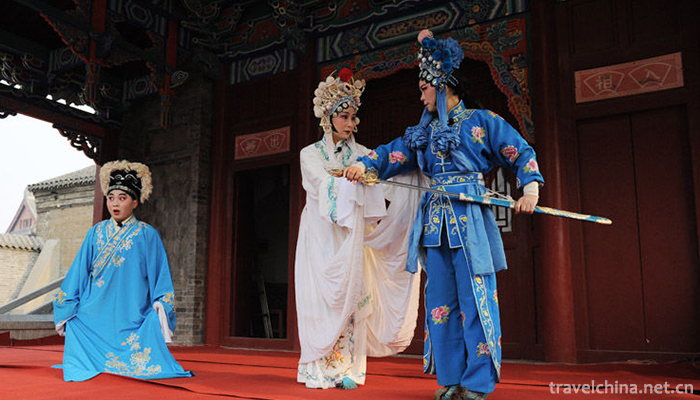
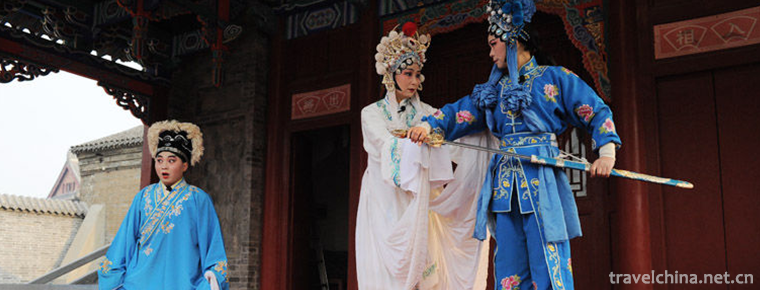
Violin Opera
-
Qianfoya Scenic Spot
Guangyuan Qianfoya is the largest grotto group in Sichuan Province. The statues of cliffs began in the Northern Wei Dynasty. After nearly 1500 years, the cliffs, which are 45 meters high and 200 meter
Views: 130 Time 2018-12-26 -
Hepeishan National Forest Park
Hepeishan National Forest Park is located in Zouping County, Binzhou City, Shandong Province, at the junction of Zouping County and Zhangqiu County. The total area of the park is 480 hectares
Views: 148 Time 2019-01-13 -
Bai nationality tiedyeing skills
Bai tie-dyeing technology, the local traditional textile dyeing technology in Dali City, Yunnan Province, is one of the national intangible cultural heritage.
Views: 250 Time 2019-04-03 -
Chun an Triangle Opera
Sanjiao Opera is one of the traditional operas in Hangzhou, Zhejiang Province. Chun'an folk custom is still singing and dancing. Every Spring Festival Lantern Festival, there are Nuo operas
Views: 129 Time 2019-04-22 -
Handmade Paper Making Skills of Dai and Naxi Nationalities
Dai and Naxi hand-made paper-making skills, Yunnan Lincang City, Shangri-la County, local traditional handicraft, one of the national intangible cultural heritage.
Views: 166 Time 2019-04-24 -
Quzi Opera
Quzi Opera, the traditional drama of Dunhuang City, Baiyin City, Huating County and Xinjiang Production and Construction Corps in Gansu Province, is one of the national intangible cultural heritage.
Views: 145 Time 2019-06-11 -
Taiji boxing
Taijiquan, a national intangible cultural heritage, is based on the traditional Chinese Confucian and Taoist philosophy of Taiji, Yin-Yang dialectical concept as the core idea, integrating many functi
Views: 204 Time 2019-06-18 -
Tan Zhenshan Folk Stories
Tan Zhenshan family has a tradition of "telling stories and telling ancient times". Some elders in the family are good at telling stories. Many stories have been passed down in their family
Views: 368 Time 2019-06-18 -
Yazhou Folk Songs
Yazhou folk song is one of the ancient folk songs in Hainan Province. It is popular in the areas of Yazhou and Dongfangkangcheng, west of Sanya Yacheng and east coast of Ledong. Yazhou Guest (Han) dia
Views: 211 Time 2019-07-10 -
University Of International Business And Economics
The University of Foreign Economic and Trade is a national key university directly under the Ministry of Education. The first batch of "211 Project" and the first batch of "double first
Views: 134 Time 2019-09-22 -
Bijia mountain Luzhou City Sichuan Province
Bijia mountain is located in Hejiang County, Luzhou City, Sichuan Province, 42km away from Luzhou City and 7km away from Hejiang county. Bijia mountain is named for its three peaks standing like a penholder. Bijia mountain area is dangerous, surrounded by cliffs and cliffs. The mountain has the characteristics of typical red Danxia landform, unique landscape and beautiful scenery.
Views: 184 Time 2020-10-16 -
Mianyang economy
In 2019, the gross domestic product (GDP) of Mianyang City will reach 285.620 billion yuan, which will increase by 8.1% according to the comparable price. The growth rate is 0.6 percentage points higher than the average level of the whole province.
Views: 144 Time 2020-12-14
